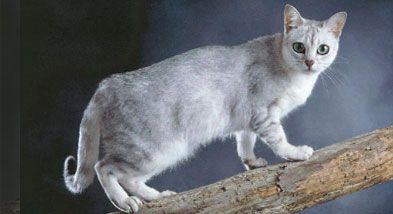Introduction
The Burmilla cat, a charming and affectionate breed, originated in the United Kingdom in 1981. This unique breed resulted from an accidental cross between a Chinchilla Persian and a Burmese cat. Burmilla cats are known for their striking appearance, playful nature, and easygoing temperament, making them ideal pets for families and cat lovers.
History and Origin
The Burmilla breed began with a serendipitous encounter between a Chinchilla Persian named Sanquist and a Brown Tortie Burmese called Piputah Pweedledee. These two cats bred accidentally when a cleaner left a door open, resulting in four kittens born in 1981. The breeder recognized the potential of these adorable kittens and worked to establish the Burmilla as a distinct breed. By 1984, breed standards were developed, and the Burmilla gained championship status in the UK in the 1990s.
In terms of recognition, the Burmilla is part of the Asian cat breed in the GCCF (Governing Council of the Cat Fancy) and is accepted as the Burmilla in FIFe (Fédération Internationale Féline). The Shaded and Tipped Silver varieties are particularly recognized, with the Golden Shaded and Tipped Burmilla also gaining acceptance in 2011.
Personality and Temperament
Burmilla cats combine the best traits of the Burmese and Persian breeds. They are affectionate and gentle, yet more outgoing than the typical Persian. These cats are known for their playful and adventurous nature, although they can be a bit clumsy. Burmillas love their human companions and enjoy spending time with them, making them excellent lap cats. However, they are not overly demanding of attention and maintain a balance between independence and affection.
Burmilla cats are sociable and get along well with children and other pets. They retain their playful, kitten-like behavior well into adulthood, making them a delightful addition to any household. Their friendly disposition and gentle nature make them ideal companions for families and individuals alike.
Care and Grooming
The Burmilla’s short, smooth coat is relatively low-maintenance. Weekly brushing or combing is sufficient to remove dead hairs and keep their coat looking its best. Longhaired Burmillas require more frequent grooming, about two to three times a week, to prevent tangles and matting.
Regular dental care is crucial to prevent periodontal disease. Brushing their teeth daily is ideal, but even weekly brushing can help maintain oral health. Additionally, trimming their nails weekly, wiping the corners of their eyes to remove discharge, and checking their ears for cleanliness are essential parts of their grooming routine. Using a cotton ball or a soft damp cloth moistened with a 50-50 mixture of cider vinegar and warm water is recommended for cleaning their ears.
To keep a Burmilla cat safe and healthy, it is advisable to keep them indoors. This protects them from potential dangers such as diseases, attacks from other animals, and the risk of being hit by a car. Indoor cats also avoid the risk of being stolen, a real concern given the Burmilla’s beautiful and desirable appearance.
Coat, Color, and Appearance
Burmilla cats are renowned for their stunning coats, characterized by a silver-white background color that is either tipped or shaded with a contrasting color. The tipped pattern features color at the tips of about 1/8 of the hair length, giving the coat a sparkling effect. In contrast, the shaded pattern has color on about 1/3 of the hair shaft, resulting in a darker appearance. Common colors include black, brown, lilac, blue, chocolate, cream, red, and tortoiseshell.
Burmilla cats can have short or long hair. Longhaired Burmillas may exhibit ear tufts and a fully plumed tail. Their overall appearance resembles the European Burmese, with a gently rounded head, medium to large ears, and large, expressive eyes that can be any shade of green. Their bodies are medium-sized, with slender legs and neat oval paws.
Interaction with Children and Other Pets
The Burmilla’s gentle and playful nature makes them well-suited to living with families, including those with children and cat-friendly dogs. They enjoy interactive play and can learn tricks, providing endless entertainment for children who treat them with respect. When introducing Burmillas to other pets, it’s important to do so slowly and in a controlled setting to ensure a smooth transition.
Unique Characteristics and Appeal
One of the most distinctive features of the Burmilla is its sparkling silver coat and the unique “makeup” lining around its nose, lips, and eyes. These cats come in two coat lengths: semi-longhair and shorthair. The semi-longhaired Burmilla, also known as the Burmilla Longhair, has a fine, silky coat with feathering on the underside, britches, plume, and bib. Despite their longer coats, these cats do not require intensive grooming and should not resemble the pet-quality Chinchilla Persian, which has a much fuller coat and a more cobby body.
Burmillas are relatively rare in the United States, and prospective owners should seek kittens from reputable breeders. It’s best to acquire Burmilla kittens at around sixteen weeks of age, once they have been well-socialized and have received their vaccinations. Keeping Burmillas indoors, neutering or spaying them, and providing appropriate scratching posts are essential for maintaining their health and well-being.
Conclusion
Burmilla cats are a delightful and affectionate breed that brings together the best qualities of the Burmese and Persian cats. Their unique appearance, playful nature, and gentle temperament make them ideal pets for families and cat enthusiasts. By understanding their history, personality, and care needs, owners can ensure that their Burmilla cats live happy, healthy lives.
For those considering adding a Burmilla to their family, it is important to remember that these cats thrive on companionship and interaction. Providing them with a safe and loving environment will allow them to flourish and become cherished members of the household.

